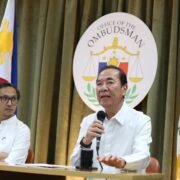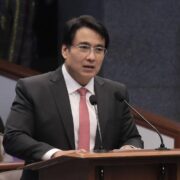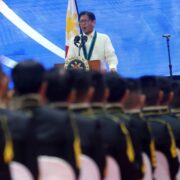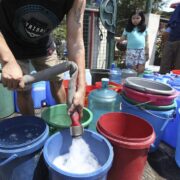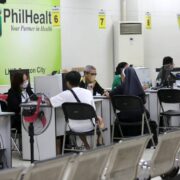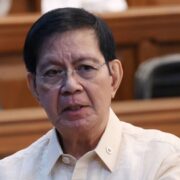Still journalists’ murder capital

For a while, media observers entertained the tiniest sliver of hope that this could be the year the Philippines finally shed its notoriety as a murder capital of journalists.
In hindsight, the dream wasn’t so far-fetched: 2024 was the first time in two decades that not a single Filipino media practitioner was killed in the line of duty, according to a report of the Committee to Protect Journalists released in February. In October, the Philippines ranked ninth on the Global Impunity Index released by the same group, one spot lower than its placement in 2023.
Last Friday, a report by Reporters Without Borders ranked the Philippines 116th out of 180 countries on the 2025 World Press Freedom Index, improving from 132nd place last year.
In other words, things were looking up, and there was a growing perception that the second Marcos administration might carve a path different from the first one, which left our democracy in tatters and an atrocious legacy of media torture and killings.
Alas, the April 29 murder of veteran journalist and Publishers Association of the Philippines chair emeritus Juan “Johnny” Dayang in his hometown of Kalibo, Aklan, dealt a blow to such optimism.
‘Freest press’ in Asia
At 89, Dayang had lived through decades of press crackdowns, served as mayor of his town for two years after the 1987 Edsa People Power Revolution, and led one of the country’s oldest publishers’ organizations. He was not just a journalist but an institution. That he could be gunned down inside his own home is an indictment on a nation that once touted itself as having the “freest press” in Asia.
The Presidential Task Force on Media Security (PTFoMS) has denounced the killing and assured the public of a quick and thorough investigation. “We are closely coordinating with all concerned agencies to ensure the immediate resolution of this case,” said PTFoMS executive director Jose Torres Jr., adding: “We stand in solidarity with the media community.”
It’s a fine message, to be sure, but an all too familiar one.
Too many times before, we have heard similar statements from the government: after the murders of broadcasters Rey Blanco in Negros Oriental on Sept. 18, 2022; Percival “Percy” Mabasa in Las Piñas City on Oct. 3, 2022; Cresenciano “Cris” Bunduquin in Oriental Mindoro on May 31, 2023; and Juan “DJ Johnny Walker” Jumalon in Calamba, Misamis Occidental, on Nov. 5, 2023.
Along with Dayang, these are the five cases of media killings since President Marcos assumed the presidency in 2022, excluding that of radio anchor Vilma Rodriguez, whose murder in Zamboanga City in October 2024 was ruled by authorities to be unrelated to her journalism.
Darkest day
In nearly every case, outrage came swift and loud. But not as swiftly have the wheels of justice turned for nearly every victim’s family.
Case in point: the Ampatuan massacre of 2009. Justice was served but only partly in what is considered the darkest day for media workers, with 32 journalists killed in a single attack. Many suspects in the brutal mass killing remain at large, and the convictions of a number of the perpetrators are still on appeal.
To be fair, there has been progress. The absence of a single journalist killing in 2024 was indeed a welcome milestone, and an encouraging sign that media killings are not inevitable. But that progress must be constant and consistent, backed by a real, functioning justice system that does not look the other way nor buckle under pressure.
After all, impunity is not just the absence of punishment, but the silent normalization of violence. It is the idea that journalism is a death sentence waiting to happen, especially for members of the alternative and community press. It is what happens when killers go scot-free and legal battles drag on for years or decades, until the public stops expecting justice to be served at all.
Machinery of fear
The National Union of Journalists of the Philippines (NUJP) rightly cautioned the media industry against taking solace in any drop in the number of journalist killings, because such minimal gains mean little to the family and loved ones of Dayang and those of many other victims.
“Each year that passes risks relegating these murders further into the past and sends the message that attacks against journalists are to be expected and can be expected to be done with impunity,” the NUJP said, adding: “Already, many of our colleagues see these attacks as just part of the territory.”
Ultimately, the government’s job is not just to protect individual journalists, though that is certainly important and necessary. Its primary responsibility is to deter attacks in the first place, by solving past killings, securing convictions, and eradicating the machinery of fear that makes such attacks not only possible but inescapable. How can there be true press freedom in a country where truth-tellers are routinely murdered and their murderers allowed to roam free?




